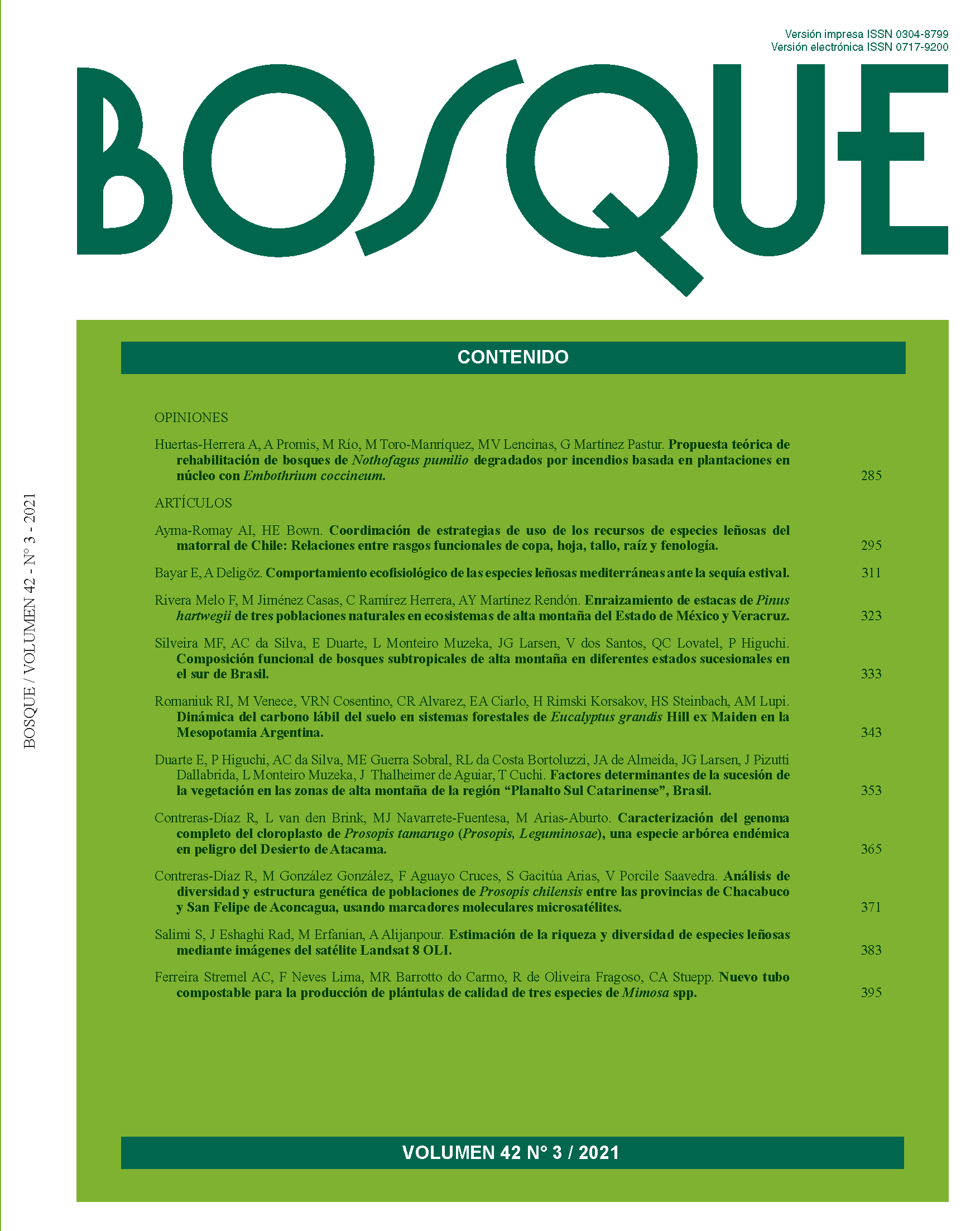Rooting of Pinus hartwegii cuttings from three natural populations in high-mountain ecosystems from Mexico and Veracruz State
Main Article Content
Abstract
The limited seed production of Pinus hartwegii Lidl. requires the use of vegetative propagation techniques to produce plants for reforestation of the high mountain ecosystems. Nothing about vegetative propagation of the species has been done to our knowledge, therefore its ability to root propagules is, so far, unknown. In this study, the rooting of cuttings from three populations of P. hartwegii was evaluated, testing three treatments of Indole Butyric Acid (IBA, Radix®) (0, 5,000 and 10,000 ppm). The experiment was established in rooting chambers under a randomized four-block design with factorial arrangement. The rooted cuttings were transplanted and kept in a greenhouse. Survival, number of rooted cuttings, length and number of primary and secondary roots were evaluated after 12 weeks. Regardless of the auxin treatment, high percentages of rooting were observed in the cuttings. The auxin in 5,000 ppm amplified and improved the response to rooting (96.6 %); while the concentration of 10,000 ppm caused toxicity, which was reflected in the lower survival of the cuttings (63.5 %). The cuttings of the three populations showed high percentages of survival (> 80 %) and rooting (> 67 %); although without significant differences among them. A hundred percent of the rooted cuttings survived transplant. Massive multiplication through cuttings rooting is feasible for P. hartwegii, regardless of the genotype. With the application of exogenous auxins (5,000 ppm) the regeneration and development of roots was favored.

